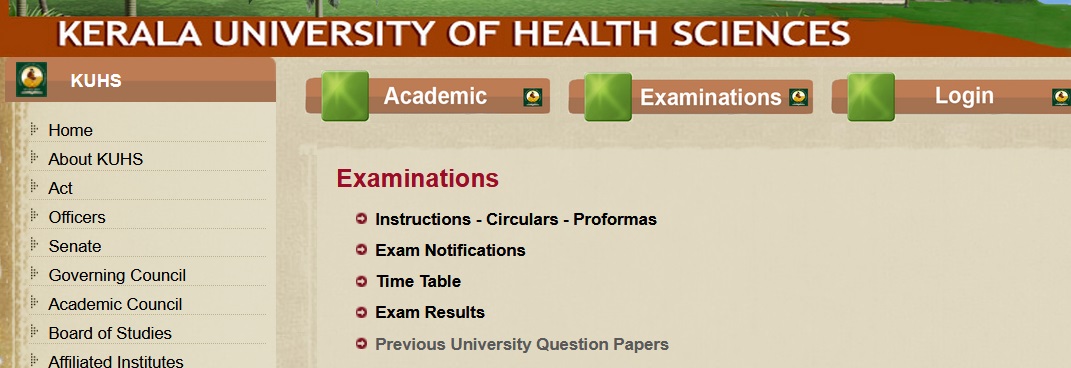Neuroscience Nursing M.Sc Question Paper : kuhs.ac.in
Name of the University : Kerala University of Health Sciences
Degree : M.Sc Nursing
Subject Name :Neuroscience Nursing
Year : II
Document Type : Model Question Paper
Website : kuhs.ac.in
Download Model/Sample Question Paper :
November 2012 : https://www.pdfquestion.in/uploads/kuhs.ac.in/3447-Neuroscience%20Nursing.pdf
May 2013 : https://www.pdfquestion.in/uploads/kuhs.ac.in/3447-Neuroscience%20Nursing.pdf
KUHS Neuroscience Nursing Question Paper
Second Year M.Sc Nursing Degree Examinations – November 2012
Clinical Specialty-II :
Medical Surgical Nursing:
Sub Specialty: Neuroscience Nursing
Related : KUHS Critical Care Nursing M.Sc Question Paper : www.pdfquestion.in/3445.html
Time: 3 hrs
Max marks :100
Answer all questions :
Essays : (4×20=80)
1. Explain the types of head injury. Describe the autoregulation in brain. Discuss the intra cranial pressure control measures in head injury. (7+6+7==20)
2. Describe the pathophysiological changes in Parkinson’s disease. Explain the clinical features of Parkinson’s disease. Discuss the rehabilitation of a client with Parkinson’s disease (5+5+10=20)
3. Classify seizure disorders. Explain the pathophysiology of seizures. Discuss the nursing management of a client with status epilepticus. (5+5+10 =20)
4. Explain the common issues faced by nurses working in neurosurgical intensive care units. Describe the nurse’s role in rendering quality care to a patient undergone major brain surgery (1O+10==20)
Short notes : (4×5=20)
5. Normal CSF
6. Ethical issues in neuro critical care units
7. Pathophysiology of myasthenia gravis
8. Clinical features of meningitis

May 2013
Clinical Specialty – II :
Medical Surgical Nursing :
Sub Specialty: Neuroscience Nursing
Time: 3 hrs
Maxmarks :100
Answer all questions :
Essays : (4×20:80)
1. Describe the oxford classification of stroke. Discuss the pathophysiology of stroke and the related clinical manifestations (5+15=20)
2. Mr X 42 years old admitted to the neurology ICU with the complaints of weakness in the upper and lower limb. During the course of time he has developed diaphragmatic palsy too, presently he is on mechanical ventilation with SIMV mode, FI02 50%, PEEP of Bern of H20, he is diagnosed to have upper motor neuron (UMN) disease. Answer the following: Explain the causes of UMN disease. Describe the clinical features of UMN disease. Describe the nursing management of Mr X. (5 + 5 +10 = 20)
3. Explain the significance of reticular activating system. Differentiate between persistent vegetative state and minimally conscious state. Discuss the management of coma in the first hour. (5+5+10=20)
4. Answer the following in relation to multiple sclerosis. Discuss the diagnostic tests. Explain the pathophysiological changes. Outline a rehabilitation programme for a 45 years old house wife with chronic progressive type of multiple sclerosis. (5+ 5 + 10 = 20)
Short notes : (4×5=20)
5. Down syndrome
6. Quality control in neurologic nursing
7. Preparation of a patient for MRI
8. Types of brain tumors
September 2013
Essays :
1. Mr. M is admitted with astrocytoma grade III. List the causes of intra-cranial tumors. Mention the signs and symptoms of intra-cranial tumors. Explain the medical and surgical treatment for intra-cranial tumors. Explain the nursing management of this patient who is in the post-operative ICU following excision of tumor. (3+3+4+10=20)
2. Enumerate the signs and symptoms of spinal cord injury at the 3rd and 4th level cervical vertebra. Explain the emergency management of a patient with acute spinal cord injury. Describe the nursing management of a patient on cervical skeletal traction.
3. 32 years old Mr. A is admitted with myasthenia gravis (MG). Define MG. Enumerate the signs and symptoms of MG. Add a note on tensilon or neostigmine test. Discuss the medical and surgical management of MG. Mention the important health education points for Mr. A. (2+3+3+8+4=20)
4. Explain neuroscience nurse’s role in ensuring quality control in the ICU. Discuss the psychosocial aspects in relation to clients and nursing staff of neuro ICU. (10+10=20)
Short notes : (4×5=20)
5. Rehabilitation of patients with CVA
6. Meningitis
7. Status epilepticus
8. Electro encephalogram
March 2014
Essays : (4×20=80)
1. Mr. X, 63 years is admitted to neuro surgery ICU, following road traffic accident. CT scan revealed subdural hematoma. Enumerate the clinical features of subdural hematoma. Explain the neuro assessment you will perform, with rationale. Prepare a nursing plan for Mr. X, for the first 24 hours, based on nursing process. (5+5+10 =20)
2. Explain the risk factors for multiple sclerosis. Describe the treatment modalities. Explain the rehabilitation of a patient with multiple sclerosis, based on the clinical manifestations.
3. Explain the cause, pathophysiology, medical and nursing management of a patient with Guillain barre (GB) syndrome. (3+5+5+7=20)
4. Describe the clinical features of MCA (middle cerebral artery) infarct. Outline a rehabilitation programme for a client with MCA infarct. (5 + 15 =20)
Short notes : (4×5=20)
5. Chronic fatigue syndrome
6. Clinical features of meningitis
7. Infection control policies in neuro ICU
8. Management of status epilepticus
September 2014
Essays :
1. Explain the pathophysiology of bacterial meningitis. Enumerate the signs and symptoms of meningitis. Describe the characteristics of CSF in bacterial and viral meningitis. Prepare a nursing care plan for a patient with meningitis in the acute stage.
2. Mr N, is 65 years, is admitted with Parkinson’s disease. Enumerate the signs and symptoms of Parkinsonism. Explain the pharmacotherapy including mechanism of action of the drugs. Prepare a care plan with four important nursing diagnoses specific to Parkinsonism. List four important health education points. (5+5+8+2=20)
3. Define hydrocephalus and craniosynostosis. Enumerate the signs and symptoms of hydrocephalus. Explain the complications that can develop in a patient with ventriculoperitoneal shunt. Explain the nursing care of a patient with ventriculo-peritoneal shunt.
4. 25 years old Mr. S got admitted in neuro ICU following severe head injury. He is in a critical position and the medical team is considering him for organ donation. Define brain death. Enumerate the tests performed to confirm brain death. Mention the ethical and legal aspects involved in organ donation. Discuss the role of nurse in preparing this patient for organ donation. (2+3+5+10=20)
Short notes : (4×5=20)
5. Brain herniation syndrome
6. Trigeminal neuralgia
7. Diabetes insipidus
8. Syncope